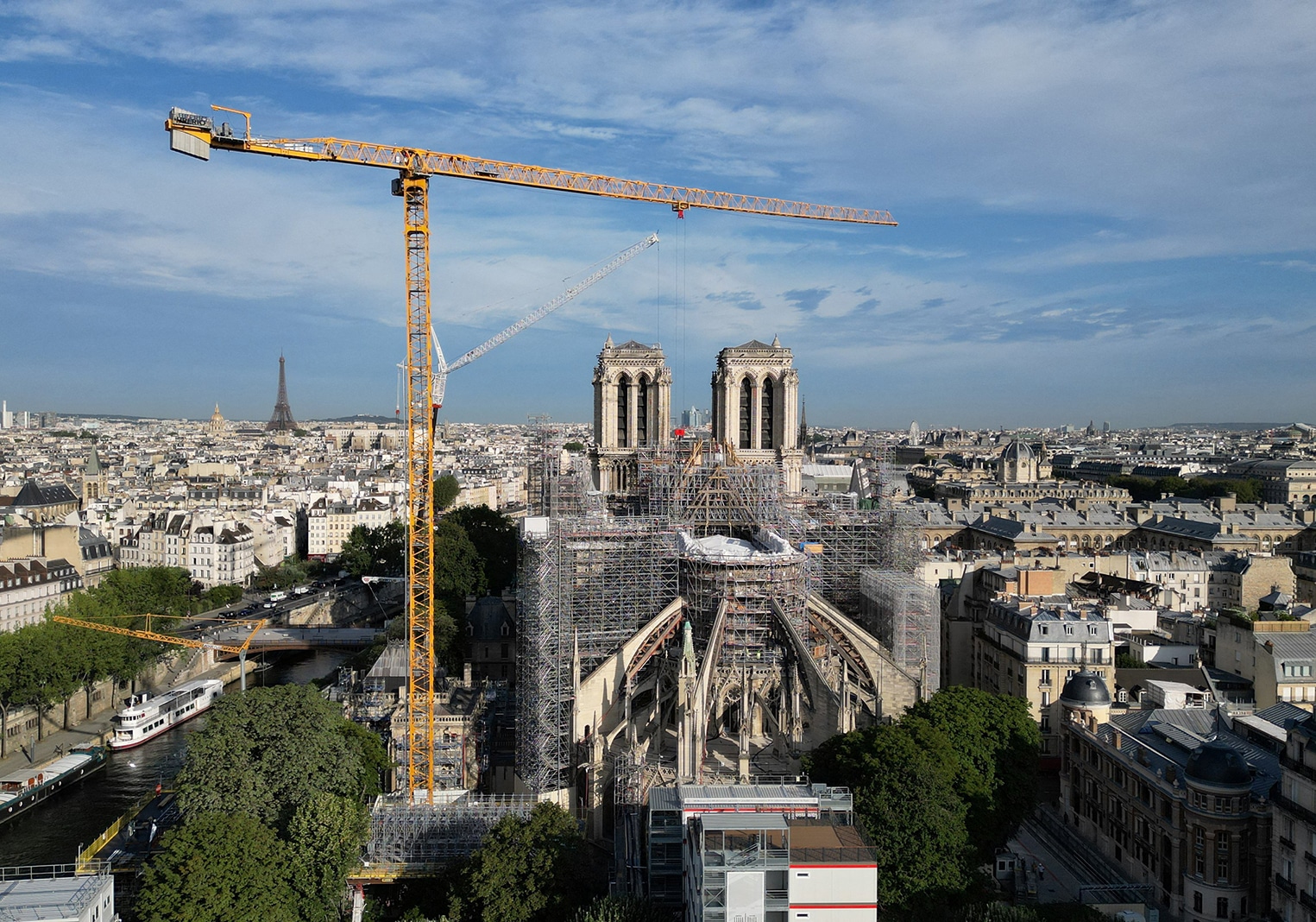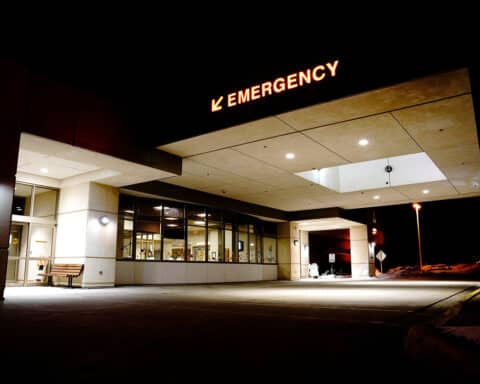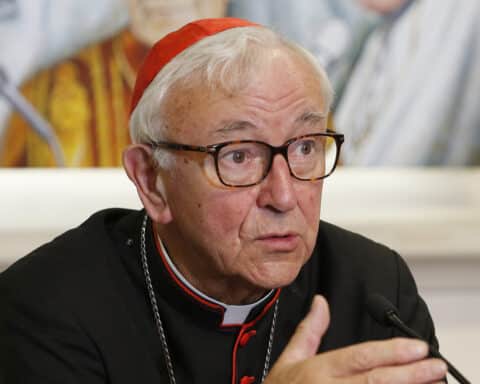PARIS (OSV News) — Stéphane Frère is a seasoned cyclist. The mayor of Bonnesvalyn, France, has spent miles on a bike hitting the roads of Florida and California. But it was a trip from the French Riviera to Rome in July that will remain one of the most significant of his life.
He wanted to attract sponsorship and donors for the church in his village, which requires urgent repairs. Thanks to his effort, not only his own village church, thousands of religious buildings in France may get attention — and funding.
The launch of the General Estates of Religious Heritage, or États généraux du patrimoine religieux in French, was supposed to take place in the famous Mont-Saint-Michel monastery, which celebrated its 1,000th birthday in June. Instead, the French bishops, thanks to Frère’s bicycle campaign, decided to launch it in Bonnesvalyn, a town of 240 inhabitants located near Château-Thierry, not far from Reims and famous for its champagne wine production.
The aim of the bishops’ project, announced Sept. 12, is to work in collaboration with public authorities to preserve this priceless heritage. “It concerns everyone, not just the Catholic Church,” Bishop Renauld de Dinechin told OSV News. As the bishop of the rural Diocese of Soissons, where the village of Bonnesvalyn is located, he was present at the presentation of the États généraux. “There is a real interest for it, on all levels,” he said.
Buildings in need of repair
The majority of France’s 100,000 places of worship are Catholic. Those built after 1905 belong to the Church. But over 40,000 depend on the public administration, under the 1905 law on the separation of church and state. It is up to city councils to finance their maintenance.
Between 4,000 and 5,000 religious buildings in France are currently in serious disrepair. But for many small cities, the maintenance budget of the churches is far too heavy for them to maintain.
“Many of the churches represent major tourist assets of the country,” Father Gautier Mornas, coordinator of États généraux, told OSV News. “Local representatives understand that patron saints’ festivals, or pilgrimage routes to (Santiago de) Compostela, can benefit their district. Religious heritage costs money, but it also pays off.”
France has a colossal historic heritage of famous churches, but the fire at Notre Dame Cathedral, which in 2019 almost consumed one of the world’s most important churches and one of Paris’ main tourist attractions, raised the red flag that their condition is truly dire.
It raised awareness of the top French politicians too. On Sept. 15, the French president launched a national donation campaign in order to raise 200 million euros ($210 million), over the next four years, for endangered religious buildings. He made the announcement as he was visiting the 11th-century church of Notre-Dame de Semur-en-Auxois in the Bourgogne wine region. “There is an attachment to this heritage, whether we have faith or not,” President Emmanuel Macron said.
The bishops’ project consists of carrying out a large-scale survey in France’s 100 dioceses, to get a precise idea of the entire heritage in question: buildings and religious objects but also furniture and intangible assets. The survey will include expert hearings and meetings with specialists from different perspectives — from technical to economic and pastoral aspects. A first roundtable will be held in Paris Nov. 4.
Abandoned churches
One of the main concerns in France is one about the churches that are not used for religious services any more — because of dechristianization, or simply because of urbanization. Young people leave the villages, and not only churches but schools, coffee shops and post offices are disappearing.
“The churches often remain the only symbol of the history and identity of the deserted villages”, Bishop de Dinechin told OSV News. “But they are an enormous burden and concern for our priests, whose number has dropped considerably”.
Many Catholic parishioners are struggling to keep their churches alive. An association called Les priants des campagnes (Those who pray in the countryside), encourages laypeople to go and open them everyday, and spend time there for prayer.
“The stones will not save prayer, but prayer will save the stones,” the president of the association, Philippe de La Mettrie, told OSV News. “If a church is alive, the money to repair it will be found.” The association is also working to set up an endowment fund to help town councils undertake works.
La Mettrie was present in Bonnesvalyn Sept. 12, along with other members of associations, such as French Heritage Society, an American organization dedicated to raising funds to protect the French architectural and cultural legacy in France and in the United States, represented by Sarah de Lencquesaing.
“We can think about other uses for churches, but only by discerning each case individually,” Bishop de Dinechin told OSV News. For example, the 93-mile route of the fortified churches of Thiérache, in northern France, bears witness to almost a thousand years of history.
“It’s part of the identity of the region,” said Bishop de Dinechin. “We can imagine bringing musicians there for a Johann Sebastian Bach concert. But we cannot turn them into gymnasiums or drinking establishments!” he stressed.
The bishops’ États généraux project will run until December 2024, the same month the Notre Dame Cathedral in Paris is expected to be reopened to the public.





